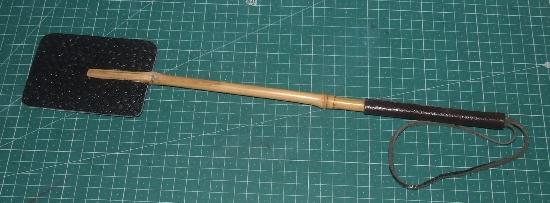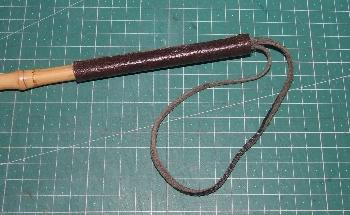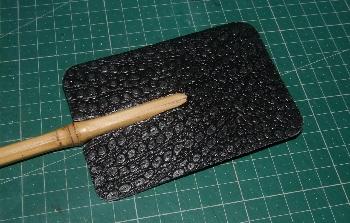-
Posts
5,931 -
Joined
Content Type
Profiles
Forums
Events
Blogs
Gallery
Everything posted by fredk
-
But no-one on here is Selling Tandy patterns or passing them off as their own. You are looking at a question raised 15 years ago and basically resolved 11 years ago. It is quite legitimate to compile the Doodle pages on to one CD or DVD and sell that to cover the cost of the disc but with no profit element for the pages and with recognition that the pages are Tandy's
-
For WHY will Tandy sue? They are the ones offering us the Doodle Pages free for our use
-
A random sampling shows the broken links are fixed Well done that man, carry on
-
Its true!
-
Excellent. An obvious thing to do in which all we others failed
-
If the top of the anvil is plain, I would grind it down flat so that the head and stem can be put in vertical alignment with the ram
-
or, you could say the day the treaty ending the war was signed in 1783 and Great Britain recognised the USA as independent, or the day in 1778 the French ship acknowledged John Paul Jones flying the Stars 'n' Stripes as when US Independence was recognised by another country Whichever date is chosen, celebrate the Independence won from a tyrannical government
-
Don't feed the troll
-
Happy Independence Day to all US Americans everywhere
-

Drawing A Straight Line For My Pricking Iron
fredk replied to AzShooter's topic in How Do I Do That?
On a wallet, my first ever so far, I 1. put the parts together using double sided tape 2. trimmed all the edges neat 3. used a Tandy pen marker to mark a line where I wanted the stitching to be 4. using that line as a guide I ran the wallet thru one of my sewing machines 4a The sewing machine is manual 4b I used a magnetic sewing guide to run the edge of the wallet against for consistent line to edge distance 4c. The sewing machine was set to about 8 stitches per inch 4d. I used a leather needle but no thread in the machine. It was only to make the holes 5. I then saddle stitched the wallet together using a very fine thread -
I have this one
-
You are correct, its for lacing. I have a set of these
-
One method I learnt is to wrap the thread tightly around a ruler or stick marked with a couple of inches. Then count how many threads you get to the inch. There is a conversion table somewhere on the internet which converts the threads per inch to regular standard measure There should be no variation on thickness between manufacturers when using the standard nomenclature. A Tex90 should be the same size no matter who makes it. Thats the whole point of standard nomenclature
-
I did. The piece I had was no good. The packs in the gardening centre were £4.99 for ten but they were very poor. I bought a children's guppy fishing net with a bamboo handle for £1
-
I hereby present my Buzzy Swatter Mk.1 over all length is 16 inches A thong glued into the natural hole of the bamboo and a piece of thick chrome tan upholstery leather on as a grip The Whacker is two thicknesses of a leather that has some sort of reptile skin pressed into it. The bamboo shaft is split and grips the Whacker like jaws, assisted by contact glue. Whacker is 2.75 inches wide by 4.25 inches long I nearly had a tester victim today. A buzzy came through my window, saw what I was making and exited pdq
-
Well done. You know you'll be asked back and will have to this again don't you?
-
It sounds like they sold you a piece they found in the loft. If it was me I'd send it back as unsuitable
-
Lorinery; I had to look that up. Everyday we learn somat new
-
It is possible to sew in repair patches, But you need to make it look balanced. I once repaired a well loved handbag for a woman. One bottom corner had the leather ripped away, it was not possible to sew it back together as it was, After discussion with the owner I sewed on a repair patch, but I had to do the other corners as well so the patch disappeared into the over-all look of the bag. I've done the same on new-made medieval style belt pouches and other things. PS. You say 'repainting'. By this I presume you actually mean 're-dyeing' ? You'd need to clean off any lacquer finish first. For doing that I wash things down with cellulose thinners, aka lacquer thinners. With some dyes manufacturers you can get a dye colour made up to match or you may have to go a bit darker
- 13 replies
-
- vintageleatherbag
- drbagrestoration
- (and 2 more)
-
I'm presuming its the thickness you want thinning? I have one of these hand-held skivers for doing straps et cetera If its to reduce the width; I think its on this site that someone made a lacing cutter. Basically, a wood base, two wood walls and a piece over the top, embedded in the base part was a razor blade. You pull the lace thru the two wood walls and the razor blade shaves off one side to narrow it. You could use this concept to reduce the thickness
-
Can you get what you need, or some of it from Le Prevo? Sometimes, with other companies, I find that by cancelling a really overdue back order from one place and getting it in from another makes the first company shift themselves
-
My thoughts; 1. whatever weight you use, use plain clean white paper on top of the coaster, not used paper, not brown and especially not newspaper 2. absolutely no heat 3. wot he says; I got a basketweave embossing plate from Bunkhousetools, aka duckcreektraders. It wasn't too expensive. https://www.shop.bunkhousetools.com/Embossing-Plates_c4.htm I've also bought from this chap in Russia https://www.ebay.com/itm/224174509500?hash=item3431d78dbc:g:d3IAAOSwE3JcWFyb Maybe one of them would make you a plate?
-
Before any conditioner, a good wash down with saddle soap I would certainly replace those handle dees. In fact I'd replace all the external metal work with brass ones where possible
- 13 replies
-
- vintageleatherbag
- drbagrestoration
- (and 2 more)
-
you're behind the news. Its a bridge betwixt Ulster and Scotland, and work is actually going on - they are looking for a site for our end, actual surveying work not just, 'umm that looks a nice place' But its all on the q. t. right now





